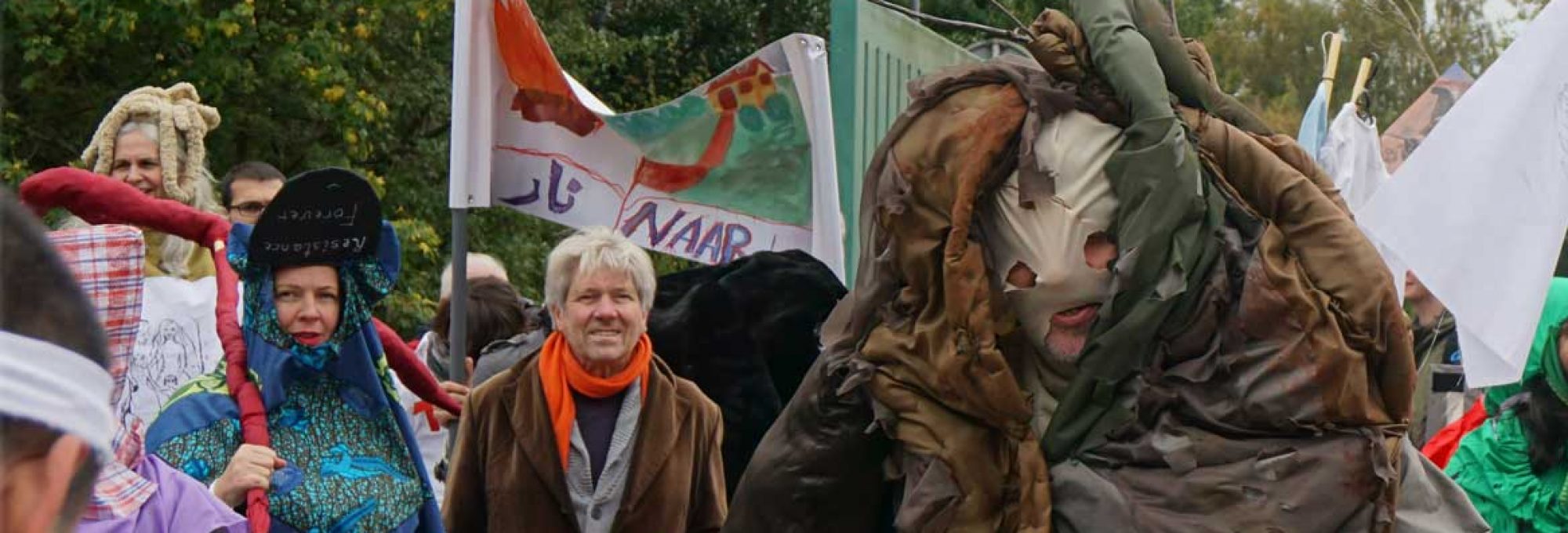To those who have no time to play is structured around four stories drawn from the artist’s own experiences. Each narrative is represented by its own form of architecture and mode of reception. As someone looking at the exhibition, you are asked to perform different roles during your time there. You become a reader, a viewer, a listener, an emotional participant, an outsider caught in the midst of a protest, a collective presence in a chorus of sewing machines or any number of other roles you can define for yourself. There is a beauty in how the exhibition unfolds and how your attention is called to other people’s struggles that ask to become part of your own, if only for a little while.
from the curatorial text by Charles Esche “Who has no time to play?” (page 35)
Antigone Update
Red Yurt
Gluklya calls the larger yurt in this exhibition the Red Yurt, in reference to the Soviet emancipatory struggle and the ambivalent impact it had on its many different territories. The yurt form here is more directly associated with its origins as it introduces stories and artworks from Bishkek, the capital of Kyrgyzstan. It is perhaps useful to know that of all the Central Asian republics that emerged since the end of the Russian Empire and Soviet Union, Kyrgyzstan has been the least authoritarian and most subject to influence by the citizens of the state. These democratic freedoms have also led to a poor economic record and consistently poor working conditions. The struggles of the Kyrgyz women in particular are what animates the Red Yurt.
Two diaries
This space references the publication of the same name, which emerged as a collaboration with Kurdish activist and poet Murad Zorava. In 2017, Gluklya was renting a studio in one of the two towers of Bijlmerbajes, a former prison in Amsterdam-Zuid-Oost. The second tower was then being used by the government as an Asylum-Seekers-Center (AZC). Her plan was to attempt a collaboration with the refugees staying there at the time, among whom was Murad. They started to draw pictures together with refugees, and compare words from their languages to words in Dutch, English, Russian. It was surprising how engaged and joyfully absorbed they became doing that. During one of the workshops, Gluklya proposed participants to write a diary, and Murad accepted this idea.
Melting Snowball
In a third space – a white dome that Gluklya named a Melting Snowball, a precarious relative of the revolutionary cobblestone –clothes are propped up around the base. Clothes are a returning motive in Gluklya’s work and these ones were worn by people who participated in the May protests in Russia from 2015-19. Inside, films show scenes from various 1st May (Labour Day) protests in St. Petersburg up to the year it was made illegal. On one textile, the words Queer-Peace-May appear, words that are also banned in Putin’s Russia today. The three videos surround you as though you have been unknowingly caught up in the middle of the demonstration.
